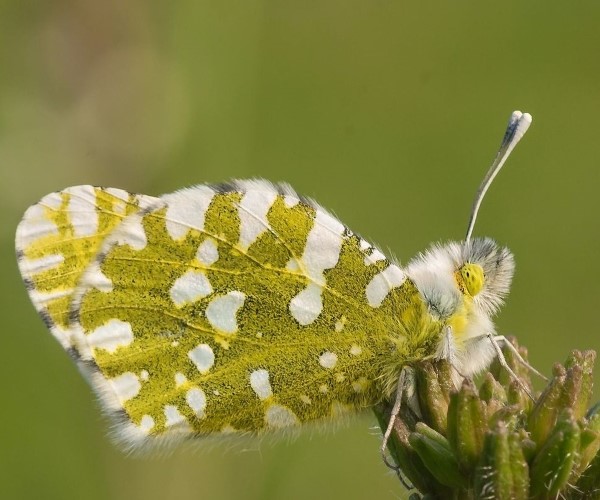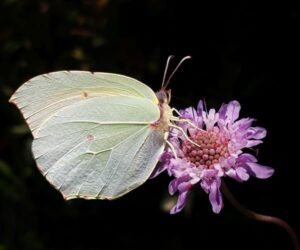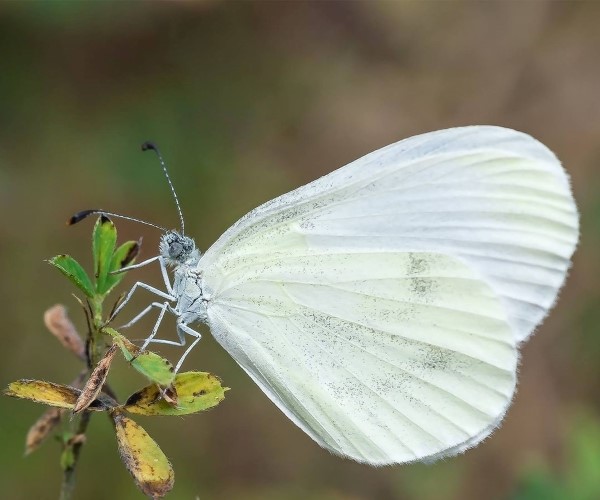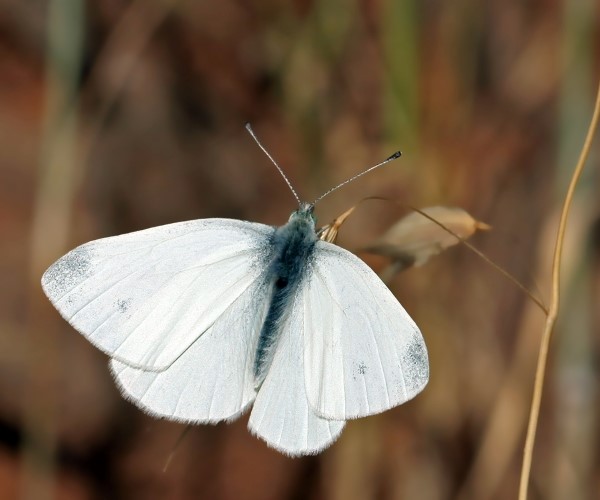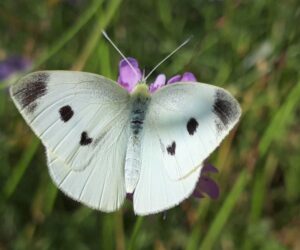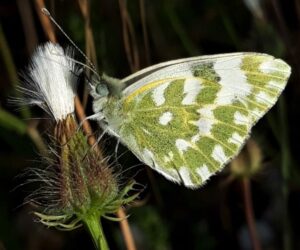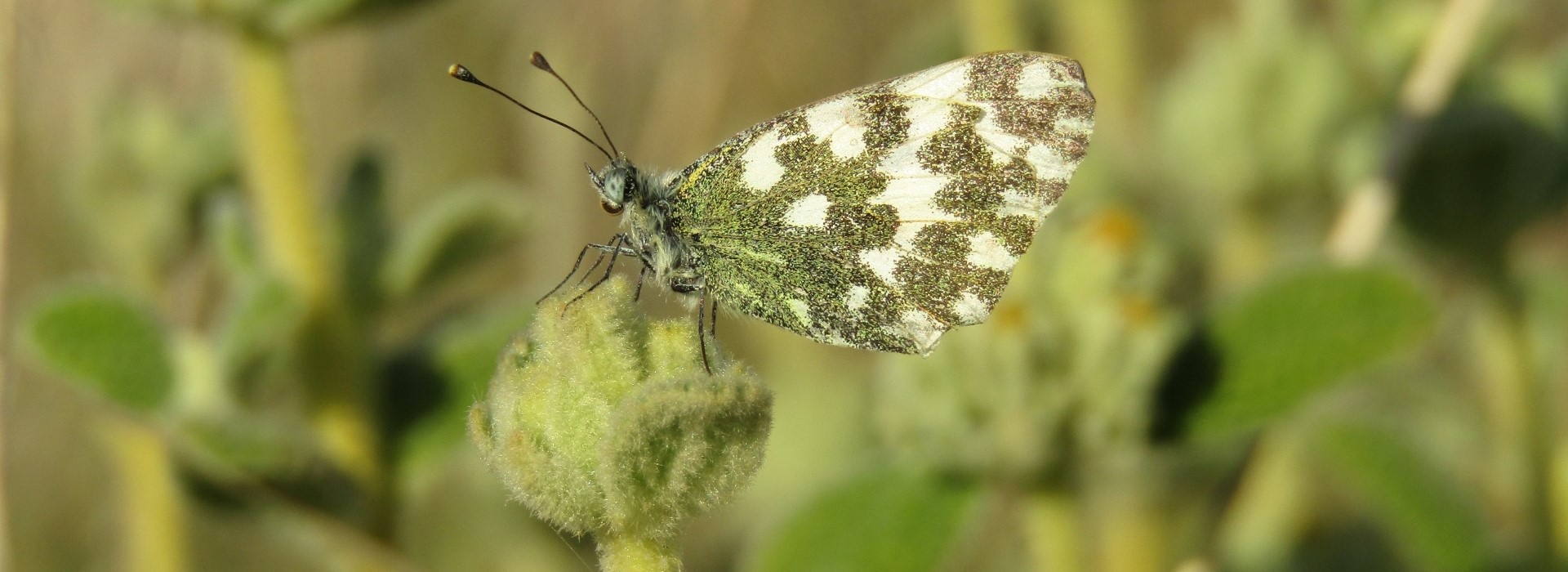
Pontia edusa, Crete - photo © K. Bormpoudaki
The Family Pieridae (Whites and Yellows)
Description
The family Pieridae consists of 8 species on the island of Crete, some of them quite common. They belong to the following genus:
- Pieris: basic colour white with few black spots – 3 species
- Euchloe: basic colour white with black spots and green-white patterned on the underside of the hindwings – 1 species
- Pontia: similar to Euchloe – 1 species
- Colias: basic colour bright yellow-orange – 1 species
- Gonepteryx: basic colour bright yellow-green- 1 species
- Leptidea: small, white with rounded shaped wings – 1 species
26 species have been observed to fly in Greece.
Generally, the family Pieridae is a large family of butterflies with about 76 genera containing about 1,100 species, mostly from tropical Africa and tropical Asia with some varieties in the more northern regions of North America.
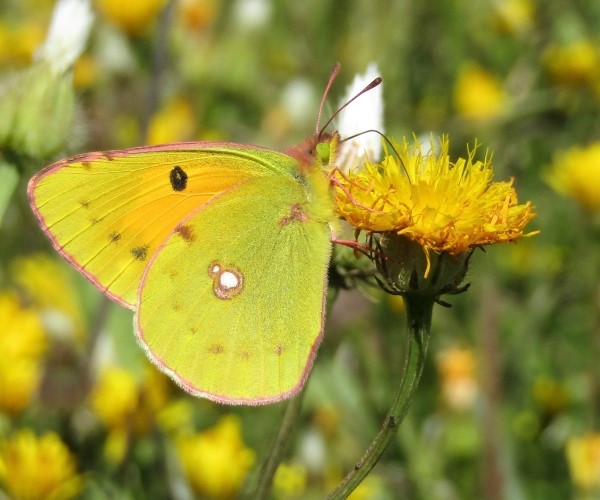
Colias crocea, Crete – photo © K. Bormpoudaki

Gonepteryx cleopatra, Crete – photo © K. Bormpoudaki
Appearance
Adults have medium to small wings that are white, yellow, or orange, with some black or red, often with black spots. Many have hidden ultraviolet patterns that are used in courtship.
The sexes usually differ, often in the pattern or number of the black markings. Males and females of all genera are almost similar.
Pieridae species with more than one generation usually have distinct seasonal variations in appearance. Adults of all species visit flowers for nectar, and adults of both sexes have three pairs of walking legs.
Life cycle – Behaviour
Like all butterflies, butterflies of the family Pieridae have complete metamorphosis. The caterpillars that hatch from the eggs eat and grow fast. Eggs are characteristic in being tall, bottle-shaped, and strongly ribbed.
Larvae are usually green and are relatively smooth, without spines and only short insignificant hair. The larvae (caterpillars) of a few of these species, such as Pieris brassicae and Pieris rapae, commonly seen in gardens, feed on brassicas and are notorious agricultural pests.
The pupa typically has a pointed head and is secured in an upright position, supported by a silken thoracic girdle and also by the cremaster to a silken pad.
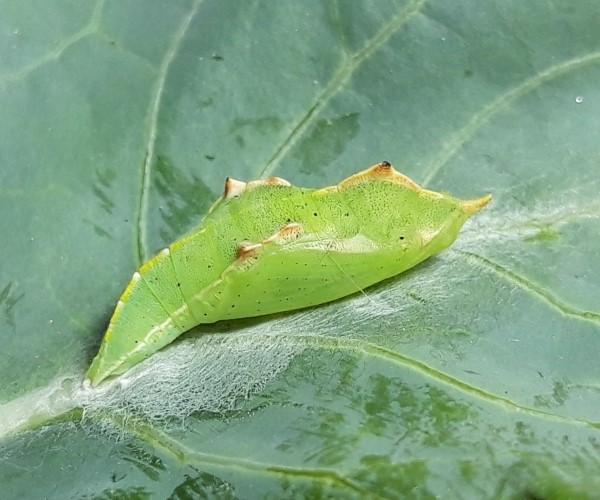
Pieris rapae pupa, Crete – photo © K. Bormpoudaki

